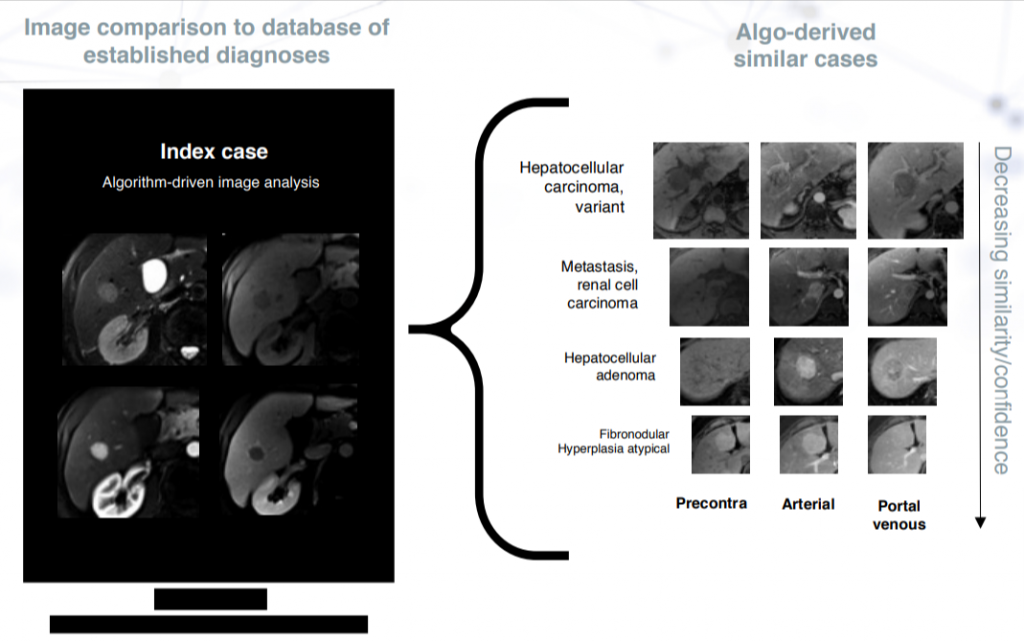A radiologist holding your x-ray print in hand and examining it with narrowed eyes while you keep biting your nails and wondering if will he be 100% sure of what he would find in your x-ray.
Have you ever experienced such intense silence but wild thoughts while under the same roof as a radiologist?
If yes, let us tell you, you will not experience a similar thing again.
Now AI is reinventing the complete radiology practice by assisting radiologists in analyzing radiology images and diagnoses.
For both tech enthusiasts and radiologists, this phenomenon of computer programs spotting serious conditions; strokes, lung clots, brain bleeds, and others, is fascinating.
An Israel-based healthcare company named Aidoc has already proved that it can be achieved with a model – aggressively trained on past data of radiology images.
So, in this blog, let’s talk about AI in radiology, its use cases, and how Aidoc is making it possible.
This guide will help you a lot if you are planning to go for radiology software development.
A #DeepLearning algorithm developed by @PRouzrokh et al. from @MayoAILab and @Mayo_OSAIL can measure prosthesis subsidence on serial Xrays following total hip arthroplasty. Watch the demo below and read the published manuscript on @Radiology_AI:https://t.co/fAkt4zezHM pic.twitter.com/tKg9Fyl9cp
— MayoAILab (@MayoAILab) July 11, 2022
First Thing First, Does Radiology Really Require AI?
Radiology is at the center of our healthcare ecosystem.
For any diagnosis, providers rely heavily on radiologists.
Over time, radiology workflows have become digital and more centralized.
However, it miserably failed to match up with the speed of primary and secondary care adopting the technologies.
And thus, the radiology industry is now at a crucial point.
If it does not now adopt modern-age technologies such as AI, machine learning, RPA, and computer vision, it will sink together with other healthcare specialties because everything is interlinked in healthcare.
So the answer to the question is, yes.
Radiology desperately requires AI technologies.
Reasons?
Well, there are multiple reasons why AI in radiology is inevitable.
But we are here sharing a few of them.
Use Cases of AI in Radiology: Where AI is Used in Radiology and Radiology Software Development?
The best thing about AI is that it is limitless.
We can utilize it for any purpose we have even in radiology software development.
However, the major limitations are compliance, data, and limited human intelligence.
Yes, we have so far successfully discovered only a fraction of AI use cases in radiology.
These game-changing use cases of AI in radiology can only be achieved through robust radiology software development.
So, now let’s talk about it in detail.
Radiology Software Development: How to Make it Work on AI?
One thing is very sure, if you want to make radiology software future-proof, it must work on AI technology.
Implementing AI has always been overwhelming, especially in the healthcare industry.
So, here we are sharing a few basics of AI implementation which you must know if you are planning to go for radiology software development.
A successful AI implementation can be achieved via an AI algorithm, dataset, and software or product.
Get Inspired by AIdoc which Takes AI in Radiology to the Next Level
Elad Walach (CEO), Michael Braginsky (CTO), and Guy Reiner (VP R&D) founded AIdoc in 2016 with a vision to leverage AI in clinical decision-making and make it so accessible that every clinician can utilize it.
So far, from a total of 9 funding rounds, AIdoc has raised a whopping $237.5 million. On June 16, 2022, the company bagged $110 million in its series D round from top investors Alpha Intelligence Capital, TCV.
The company offers 3 major AI solutions.
- Radiology AI
- Neuroscience AI
- Cardiovascular AI
The best thing about AIdoc is that they have developed in-house AI algorithms for stroke, pulmonary embolism, cervical fracture, intracranial hemorrhage, intra-abdominal free gas, and incidental pulmonary embolism.
Using their solutions, radiologists and physicians can have additional data from medical images that are capable of drawing a line between time-consuming inefficient diagnosis and rapid accurate diagnosis.
The solutions are integrated with a prioritization tool to help clinicians detect urgent cases and quickly work on them with streamlined workflows for higher patient outcomes.
The company has so far helped the healthcare ecosystem outstandingly by taking both AI in radiology and radiology software development to the next level.

Let’s Get It Done. Building Your Next-Gen Radiology Software with a Healthcare-Specific IT Team
We’re an Ontario-based IT company.
And the one thing we and our clients are most proud of is that we only entertain healthcare IT projects.
Why?
Well, we understand healthcare and healthcare is something that makes our 50+ healthcare IT professionals happy.
More frankly, being a healthcare-specific IT company is what we choose to reinvent healthcare rather than feeling satisfied with one or two successful healthcare projects.
Our team of 50+ healthcare IT professionals includes UI/UX designers, developers, business analysts, compliance specialists, DevOps engineers, cloud specialists, and QA engineers.
Be it senior care, mental health, primary care, or even women’s health, we have delivered several mobile apps, web apps, and software to startups, hospitals, LTC homes, and enterprises.
Our healthcare solutions are always equipped with the fusion of two rare things – clinical value and peace of mind.
We’re known for our intense level of healthcare passion and our madness over healthcare.
So, if you are looking for a tech partner who takes healthcare very seriously, let’s talk.






